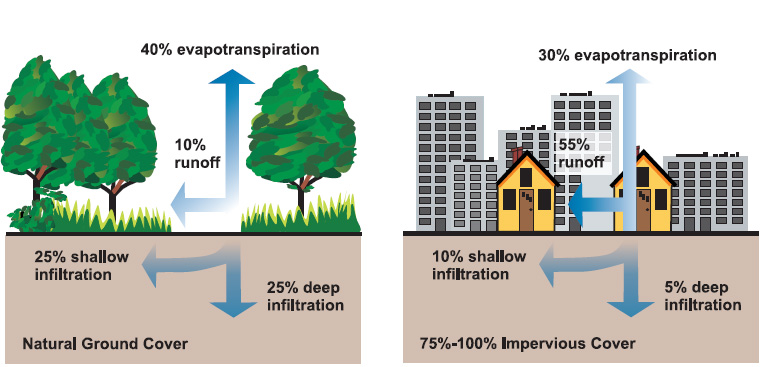Happy New Year one and all. It would be rude not to wish you all a fabulous 2014. And what better way to spend New Years day than updating my blog for my hardcore fans and followers. Without further ado, please sing-a-long to ABBA's rendition of 'Happy New Year', you know you want to.
Moving on swiftly.
As promised, I will now look at ways in which cities are acting to mitigate the impact of flooding. How? If I told you now that would be cheating. You'll just have to read if you want to find out which techniques can be used to protect and limit damage to a city and its population.
Flood impact is one of the most significant disasters in the world. The causes of floods are due to a combination of natural and human factors, from heavy rainfall to aggravation of drainage channels, from high floods to improper land use. As explored in previous posts, population increases result in more urbanisation, more impervious area and less infiltration thus greater flood peak and run-off (Tingsanchali, 2012).
As displayed in the diagram below, the urban flood Risk = Hazard x Vulnerability

There are two types of flood mitigation and prevention:
- Structural flood and control measures e..g construction of dams and river dikes
- Non-structural measures e.g. flood forecasting and warning, public participation, risk management
In most development countries, flood disaster management activities are handled by government and are mostly reactive responding to prevailing disaster situations. Critics suggest that this should be changed to a more proactive response to increase effectiveness of management and reduce losses of life and properties. However, this involves more effort, time, budget, equipment, facilities and human resources.

As seen in the diagram above, there are 4 key steps in flood disaster management which will be discussed in this post.
- Preparedness before flood impact (e.g. warning and forecast)
- Readiness upon flood arrival
- Emergency responses during flood impact
- Recovery and rehabilitation after flood impact
Flood management does not strive to eliminate flood hazard as flood risks cannot be entirely avoided. Thus there are many ways in which cities go about managing their flood risk. I describe some of these mitigation techniques below:
1. Storm water retention measures are vital for mitigation of urban floods. This can be achieved by constructing basins or ponds that store surface run-off temporarily and release it at a controlled rate.

2. Modelling and forecasting are basic steps of risk management in order to mitigate flood hazards. This process includes identification of all water related hazards, analysis of hydro-meteorological data and the hydraulic simulation of floods. A number of different scenarios can then be modelled to factor in the consequences of urban floods providing information about the expected flood frequencies and magnitudes therefore highlighting those areas which are vulnerable.
3. Reduction of surface run-off is an important factor to consider when mitigating flood risk in urban areas. This can be achieved by increasing infiltration and evapo-transpiration from the catchment areas by preserving unsealed and greened spaces in the city.

4. Cleaning and maintenance of drainage is essential to ensure their operational reliability. A major cause of flooding due to heavy rainfall is the blockage of drainage facilities with rubbish. Thus in order to mitigate the flood risk, cleaning and maintenance must be in place.
5. Detaining or diverting run-off is a structural measure that may be implemented in order to mitigate urban floods due to over-bank flow. This includes polders and basins, bypass channels, dredging and widening of stream and channels, levees and embankments. Whereas tidal barriers can be used to reduce flooding due to high tides.

6. Developing workable evacuation plans is an approach that can be used to reduce the physical vulnerability of people. Evacuation shelters, supply of fresh water, food, medicine are all factors which contribute to an efficient and coherent evacuation plan.
Right. That's all for today folks. Happy New Year!
No comments:
Post a Comment